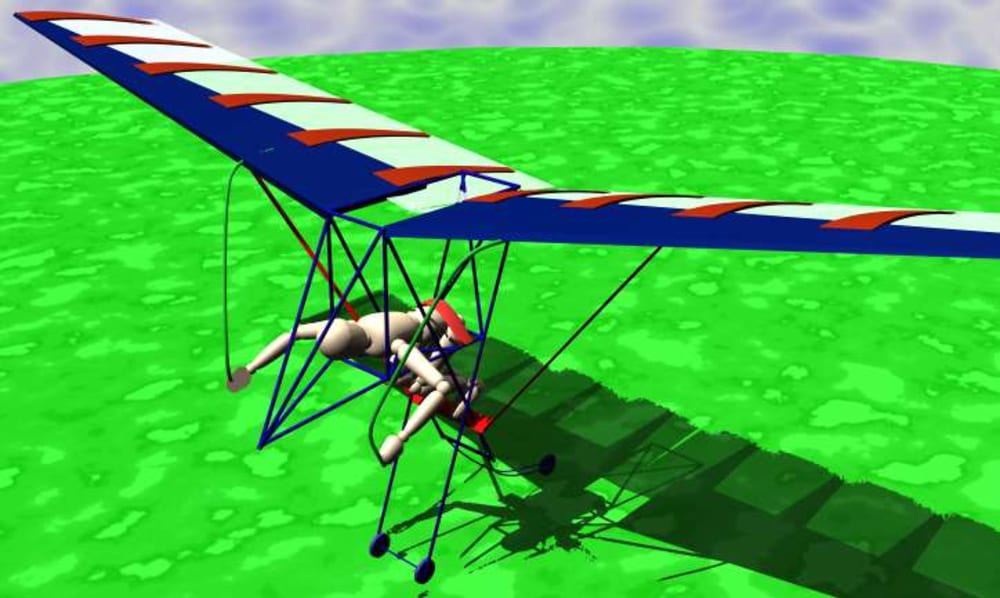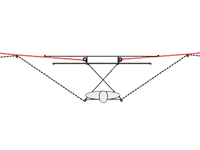Flapping winged flight is the most efficient means of transportation in the natural world; consider that birds migrate thousands of miles on very little energy. Since Da Vinci men have dreamed of emulating the elegance of birds. Several fixed-wing designs have proven that the human body is capable of powering significant flight distances e.g. the gossamer albatross. With today's materials and construction techniques the dream of human-powered ornithoptic (HPO) flight is well within reach.
My design for HPO follows the basic size and shape of log-proven hang-gliders, combined with modern flexible composite materials to achieve a lightweight and flexible wing, based on my concept of “Tapered-spring-energy.” Find a feather, any feather at all, and you will notice that it is stiff at the base, and acts like a tapered spring; like a modern fishing pole. Bird’s wings do the exact same thing – stiff at the base and more flexible at the ends – like a tapered leaf-spring. My deign acts like two huge, flattened out, fishing poles for the ‘wing bone’ and then smaller curved fishing poles for the ‘feathers.’
The main wing bone, or wing-spring, is a simple flat rectangular construction of carbon-fiber and flexible epoxy resin cut in half diagonally. The ‘feather-quills’ are similar in design, except that that are curved like feathers to create the airfoil shape of the wing that is covered with rip-stop nylon like a hang-glider. The wings are hinged to a rigid carbon-fiber frame. My calculations put the finial weight to be less than 75 Lbs – similar to a hang-glider of the same size.
The wings are powered by a ‘squatting’ motion of the legs. Just like a bird uses both of its powerful breast muscles at the same time, the HPO will use both legs to input energy into the wing-springs on the down stroke. The upstroke is almost free due to aerodynamic forces. Notice that a bird’s back muscles are about 10% of their breast muscles. It’s easy to imagine a mechanical ‘assist’ with compressed air for take-off and landing.
This concept represents an extension of the existing hang-glider industry, except there need not be any cliffs to jump off; or it might even become a new way to make your morning commute.
After proof of concept and final prototyping, manufacturing would follow existing carbon-fiber-epoxy techniques. Basically it’s a combination of existing hang-glider manufacture, with fishing pole manufacture, and a body shop.
Like this entry?
-
About the Entrant
- Name:Matthew Bailey
- Type of entry:individual
- Software used for this entry:TrueSpace & Canvas
- Patent status:none





